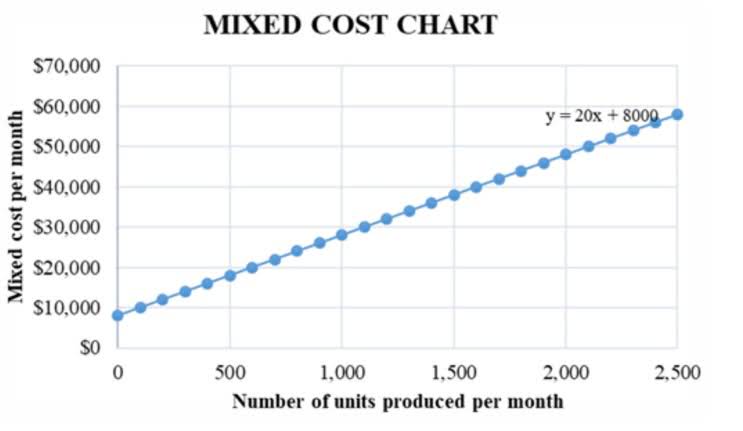
Just indicate how many employees work at your company, how many hours they work a week, and for how many weeks. Our model will then instantly calculate the Full Time Equivalent for you. To find the equivalent of a full-time day, divide the total number of hours by 8.
Benefits of Calculating FTEs
- FTEs are calculated in different ways for different accounting uses or for calculating eligibility for different federal programs.
- Join and enjoy unlimited access to SHRM Executive Network Content.
- When you add your part-timers together, you create an FTE employee.
- By determining your company’s overall FTE, you can plan in advance and manage your payroll expenses.
- After doing this comparison with all of their employees, the employer can get a total number of FTE employees (with an FTE of at least 1) and part-time employees (with an FTE of below 1).
- It’s the key to unlocking the full potential of your team and your business.
The ACA defines a full-time employee as someone who works 30 hours per week or 130 hours per month. If your company considers the number of hours for a full-time position as 40 hours per week, note that working 30 or more hours fte meaning counts as 1 FTE for purposes of ACA compliance. If you have a mix of full-time and part-time employees, the full-time equivalent (FTE) lets you represents the full-time hours that all of the employees in your business work.

Calculating FTEs for Standard Accounting
Below, we’ll look more closely at FTE, the equation for an FTE calculation, and why it’s an integral metric for understanding your company’s organizational needs. Keep reading for a comprehensive explanation on how to set yourself up for success with FTE calculations, or use the links below to jump to a section you’d like to learn more about. For more support in calculating your organization’s Full Time Equivalent, https://www.bookstime.com/ download our free FTE Template and streamline your staffing calculations for efficient resource allocation. Many regulatory requirements, like compliance with labor laws and benefit programs, are based on Full Time Equivalent counts. Accurate FTE calculations ensure your organization remains compliant with legal obligations and eligibility criteria for government programs and support that look at FTE.
What does FTE mean in salary?
Annual mean salary per employee in the U.S. 2022 – Statista
Annual mean salary per employee in the U.S. 2022.
Posted: Tue, 21 May 2024 07:00:00 GMT [source]
Easily and quickly gather the data you need to calculate your organization’s FTE so you can spend more time on the strategic planning necessary to drive business outcomes. To convert an employee’s full-time equivalency into standard hours, multiply their FTE rate by 40. For example, if an employee has an FTE of 0.80, multiplying that number by 40 means that an employee works 32 hours a week. Most US companies adhere to the standard 40-hour, five-day workweek. However, many employers have experimented with a 4-day workweek in recent years. Add the full-time FTE (in this case, it’s 2.0 since there are two full-time employees) to the part-time FTE from the previous step (1.5).
- First, count the total number of employees who worked at your company at any time during the year, both full-time and part-time.
- If you have at least 50 FTEs employees, you are an ALE for the year, which means you are subject to specific reporting requirements and share responsibilities under the ACA.
- An FTE of 1.0, for example, corresponds to the hours worked in a day for a full-time employee.
- By comparing actual Full Time Equivalent counts with targeted FTEs, your organization can identify gaps in its workforce coverage and weed out any inefficiencies.
- Determining the amount of workers in your organization and the amount of time they work is crucial for budgeting, benefits administration and legal purposes.
FTE Employees for the Paycheck Protection Program

If a company considers 40 hours per week as the basis for a full-time position, then anyone working an amount of hours below this range is considered a part-time employee. The same logic is applied if a company considers 30 hours per week as the standard for a full-time position. The calculator will then tell whether you are an Applicable Large Employer or not. While a full-time employee typically works a standard number of hours per week, a Full Time Equivalent is a unit that measures the total workload of multiple part-time or full-time employees.
Spend just minutes tracking hours.

- The Full Time Equivalent (FTE) represents a unit of measurement standardized to equal the number of hours worked by the typical full-time employee.
- If an employee works 40 hours per week, they are considered a full-time employee.
- For the SBA calculation method #1, to get the FTE, enter the number of full-time employees and the total sum of work hours by part-time employees.
- The first step to calculating the FTE of your company is to make a list of all of your employees.
- The Fair Labor Standards Act (FLSA) doesn’t define what full-time or part-time employment is for any employer.
- Knowing FTE helps you plan staffing, budget smartly, and make fair decisions about benefits and compliance.
- An unidentified manufacturing is pledging to create in Forsyth County at least 69 full-time or full-time equivalent jobs as part of a $10.5 million capital investment project.
- As part of this, calculating a Full Time Equivalent (FTE) count is essential.
- However, bear in mind that this only applies to positions that work 30 hours per week when assigned a 0.75 FTE position, i.e., the IRS minimum for a full-time definition.
- There are numerous reasons why calculating FTE can prove meaningful to your company.
- The full time equivalent, often abbreviated as FTE is an indicator that reflects an employee’s productive capacity.
- A typical full-time schedule is 40 hours per week, 52 weeks per year, which totals 2,080 hours.














Leave a reply